
- APPLY E-VISA/ETA
- LOGIN / REGISTER

What is the Canadian travel number?
A CTN only reduces airport delays for travelers whose names are identical to those on the Secure Air Travel Act (SATA) list (also known as Canada's "No Fly List").
The CTN is a one-of-a-kind number provided by the Passenger Protect Program (PPP) to passengers booking flights to, from, and/or within Canada. The CTN is utilized during the SATA list security screening procedure before boarding a plane. It is used as an extra piece of information to guarantee that travelers are not mistakenly detected and experience airport delays.
Using your Canadian Travel Number (CTN)
Waiting for your ctn.
You may access your CTN account at any moment to monitor the status of your application. You will get an email with your CTN after your applications have been processed.
When you can use your CTN
If an airline has moved to the new Government-controlled centralized screening system, passengers will be given the opportunity to furnish a CTN when booking flights to, from, and/or within Canada. By the end of 2022, all air carriers will be ready to take your CTN.
How to use your CTN
You may use your CTN to book flights to, from, and within Canada by entering it into the online reservation system of the airline or travel agent. You may also use it at the airport to purchase a flight or apply it to an existing flight.
The CTN during screening
The new government-controlled centralized screening will check all passengers against the Secure Air Travel Act (SATA) list before your travel. If a listed individual is flagged during screening, he or she may be subjected to extra screening or refused boarding.
The CTN, along with other personal information submitted, such as names, dates of birth, and gender, will be used to validate passengers' identities when they are checked against the SATA list. This will assist to guarantee that legitimate travelers with the same name as someone on the SATA list do not face air travel delays as a result of the Passenger Protect Program.
If you continue to have travel delays when utilizing your CTN, it is critical to remember that there are many factors other than the SATA List that can cause delays or prevent someone from boarding an aircraft. Airlines and other nations have their own security lists and screening procedures in place.
Related Articles
- Can I apply for eTA Canada twice?
- How much bank balance is required for a Canada tourist visa?
- Is it safe to travel to Banff alone?
- Can we convert a visitor visa to a super visa in Canada?
- How to Get Around Canada?
- How to travel to Canada from the Czech Republic?
- Does a Czech citizen need a visa to visit Canada?
- Which eSIM has the best coverage for Canada?
- Can I go to Canada after 40 years old?
- What language is spoken in Canada?
HOW CAN WE HELP?
Your Full Name *
Your Email *
Your Phone Number *
Your Question *
NEED HELP 24/7
How it works ?
APPLY WITH CONFIDENCE
- Safety, Fastest, Reliable, Save Time.
- Secure Online Payment.
- 3 Working Days Guarantee.
- No Hidden Fees and No Traps.
- Money Back Guarantee if Declined.
- Make a payment
- Coperate Account
- Universal Terms Of Service
- Legal Agreements
- Privacy Policy
- Payment Guidelines
- Disclaimers
- Check Requirements
- Canada visa for Portuguese citizens
- Canada visa for Dutch citizens
- Canada visa from Denmark
- Canada visa for Korean
- Canada visa for New Zealand citizens
- Canada visa for Swiss citizens
Useful Information
- Make payment
- Check Status
- Government News
- Travel Insurance

www.thecanadianimmigration.org is part of Canada Immigration Services Group - the world leading in Online Travel & Related Services to travel to Canada. 1997-2024. Canada Immigration Services. All Rights Reserved.
This is a commercial/Private Website, NOT an official website of the government.
This is a commercial website to apply eVisa to Canada through Canada Government Website, you will be charged a fee. To book a landing visa under our process , we will charge a service fee for providing consultancy, submitting applications and informing the status and results.
Our fee will be higher than you apply directly on Canada Government Website or at Canada Embassies in your country.
- Skip to main content
- Skip to site information
Language selection
Help us to improve our website. Take our survey !
Pre-boarding identification requirements
On this page, domestic air travel, international air travel, canadian travel number.
Bring the right identification to the airport to help with a quick identity verification and check-in process.
Remember that the name on your identification must match the name on your airline ticket and boarding pass.
If you have Canadian identification
Bring one identification document issued by a Canadian federal, provincial or territorial government that includes your:
- date of birth
If you don’t have an identification document that includes your photo, full name and date of birth:
- Show two pieces of identification issued by a Canadian federal, provincial or territorial government that show your name.
- One of these documents must show your full name and date of birth.
Valid identification documents issued by a Canadian government include:
- citizenship card
- permanent resident card
- record of landing form/confirmation of permanent residence (IMM 5292 and IMM 5688)
- immigration documents issued to foreign nationals (e.g., work permit, study permit, visitor record, temporary resident permit, refugee approved status)
- birth certificate
- driver's licence
- health card
- identification card
- Canadian military identification
- Certificate of Indian Status (status card)
- Federal police identification
- Firearms licence
- Government employee identification cards (federal or provincial)
- Old Age Security (OAS) identification card
You can't use hunting, boating and fishing licences as identification for domestic flights.
If you don’t have Canadian identification
You can use a travel document you used to enter Canada:
- United States Permanent Resident card
- Enhanced Driver’s License
- any document referred to in subsection 50(1) or 52(1) of the Immigration and Refugee Protection Regulations
Air Canada has introduced digital identification technology through the Air Canada mobile app. Select travellers from Vancouver International Airport and Toronto Pearson International Airport are eligible.
Learn more about the digital identification system. (AirCanada.com)
From January 10 to March 31, 2024, Canadian, Belgian or Dutch passport holders, aged 18 and older, can voluntarily participate in a pilot project for biometric boarding of KLM flight KL672 departing YUL Montréal-Trudeau International Airport.
Learn more about the digital travel credential pilot. (KLM.nl)
Bring one valid identification document issued by a government authority with your:
Valid identification documents include:
- Canadian passport
- Passport issued by a country where you are a citizen
Canadian citizens should always carry a valid Canadian passport when travelling outside Canada.
More information about travel documents
If your name is the same, or similar, to that of someone on the Secure Air Travel Act list (sometimes called Canada’s “No Fly List”), you could save time by applying for a Canadian Travel Number (CTN).
More information about the CTN
- Canadian passports
- Travelling with a permanent resident card
- Travelling as a dual citizen
- Secure Air Travel Regulations , Department of Justice Canada
- Passenger protect program , Public Safety Canada
Redress system for travellers caught by 'no-fly list' errors coming this month: Blair
Those falsely flagged as security threats will be able to apply for special number.

Social Sharing
Help is on the way for people erroneously flagged as security threats on the "no-fly list," Public Safety Minister Bill Blair announced Wednesday.
The minister said he hopes to have a new system for individuals who have names similar to those of genuine terror threats in place later this month — and up and running in time for the holiday travel season.
"It wasn't just an inconvenience. It was very traumatic for those families, and I think it's concerning to the kids," Blair said in an interview with CBC News.
"It was the right thing to do, and we've been working through it."
Canada's no-fly list — known as the Passenger Protection Program or the Secure Air Travel Act — dates back to 2007 and is meant to stop potential security threats from boarding commercial planes.
The old system was built on names rather than unique identifiers, such as dates of birth or passport numbers. As a result, some Canadians — including young children — have been mistakenly flagged by the system because their names match, or are similar to, the names of real security threats.
- Families share their 'no-fly list' ordeals with Public Safety Minister Bill Blair
- No-fly list headache may soon be over for this Canadian boy and others in the same boat
For years, the families affected by the system and the advocacy organization they formed to respond to it, the No-Fly List Kids, have lobbied the government to fix the problem — arguing the experience of being barred from boarding a commercial aircraft is traumatizing.
Today, the group said the measures announced in the Commons represent "one step forward in the call for ongoing and increased accountability, transparency, and anti-racist policies from Public Safety and other National Security organizations."
The final provisions of the Secure Air Travel Regulations came into effect on Wednesday, transferring the responsibility for screening travellers against the list away from air carriers and to the federal government. Prime Minister Justin Trudeau announced the regulations in the House of Commons on Wednesday.
In the coming days, certain travellers will be able to apply for a "Canadian Travel Number" – a unique number they can use when they book air travel to distinguish them from those on the list, says a media release from Blair's office.
Application launching within 2 weeks
The release said the application is scheduled to launch online within two weeks and will allow travellers to apply before air carriers start to transfer to the new centralized screening system beginning in late November.
Conservative public safety critic Shannon Stubbs said Conservatives will be watching to make sure the Liberals follow through.
"Unfortunately, for years the Liberal government has failed to address the issue of Canadians – often children – who have been stopped at airports because their names are similar or the same as individuals on Canada's no-fly list. This is unacceptable," she said.
"We want to thank groups like No-Fly List Kids and their families for the advocacy they have done to get the Trudeau government to finally act and fix this wrong."
When asked why it's taken so long to fix the issue, the minister said it took both legislative and regulatory changes to get to today.
WATCH | Trudeau announces changes to the 'no-fly list'

Trudeau announces changes to the 'no-fly list'
"It was also necessary to develop and test and implement some pretty complex IT systems," Blair said.
Public Safety said new regulations will also allow the government to screen travellers against the list before they arrive at the airport for their flight — up to 72 hours before takeoff — to prevent delays at check-in.
- Boy, 6, still flagged in no-fly list mix-up at Pearson, family says
"It will be a central database managed by the government rather than data that's handed over to the airlines," Blair said.
"That really does, in my opinion, improve its utility in maintaining a secure and safe environment on the airlines. We're able to make more information available in that."
Government officials have not confirmed how many people are on Canada's no-fly list, arguing the information could help terrorists plot a catastrophic attack on an airliner.
In the 2018 budget, the Liberal government pledged more than $80 million over five years, and $14 million annually afterwards, to build the new centralized screening system.
Canada's updated national security legislation, previously known as Bill C-59, gave the department the authority to create the new system. It was passed in June 2019.
ABOUT THE AUTHOR

Catharine Tunney is a reporter with CBC's Parliament Hill bureau, where she covers national security and the RCMP. She worked previously for CBC in Nova Scotia. You can reach her at [email protected]
- Follow Cat on Twitter
Related Stories
How to call Canada from the USA:
* Use also to TEXT Canadian numbers.
Current time in Ottawa, Canada: 6:17 AM, April 17, 2024
- This country uses multiple time zones
Calling Canada explained:
- 1 - North American long distance prefix
- area code - 3 digit area codes
- Phone Number - 7 digits
- United States to Canada dialing format: 1 ??? ??? ????
- this country is in the North American Numbering Plan (calling it works like a US long distance call)...however, international charges may apply when calling Canadian numbers!
Area codes:
Phone books:.
- Canada411 - residential and business searches
- Canpages - business directory
Traveling to Canada?
- Single emergency number: 911
- Dialing emergency abroad
- US embassy contacts
- Stay connected with Airalo eSIM cards
Knowledge base
- Save on international calls in 2022
- The plus sign (+) and international phone numbers
- A quick look at the new eSIM technology
- ..more articles at FAQ section
What is a Known Traveler Number (ktn number)?
When reserving flights, you’ve likely observed that there’s a check box in which you can input your Known Traveler Number (KTN). And if you’re new to TSA PreCheck or Global Entry, you are probably wondering what a Known Traveler Number is, how it works, and why you don’t have anything to fill in your TSA PreCheck or Global Entry number yet. Well, here’s everything you need to quench your curiosity.
Looking For Cheap all inclusive vacations from Toronto ? Click here
What is a known traveler number?
A Known Traveler Number (KTN), also commonly referred to as a Trusted Traveler Number, is a special number designated to travelers by the United States Transportation Security Administration (TSA), Department of Homeland Security (DHS), or Department of Defense (DoD). This number qualifies that you had gone through a preflight history test or different screening before checking in for a flight.
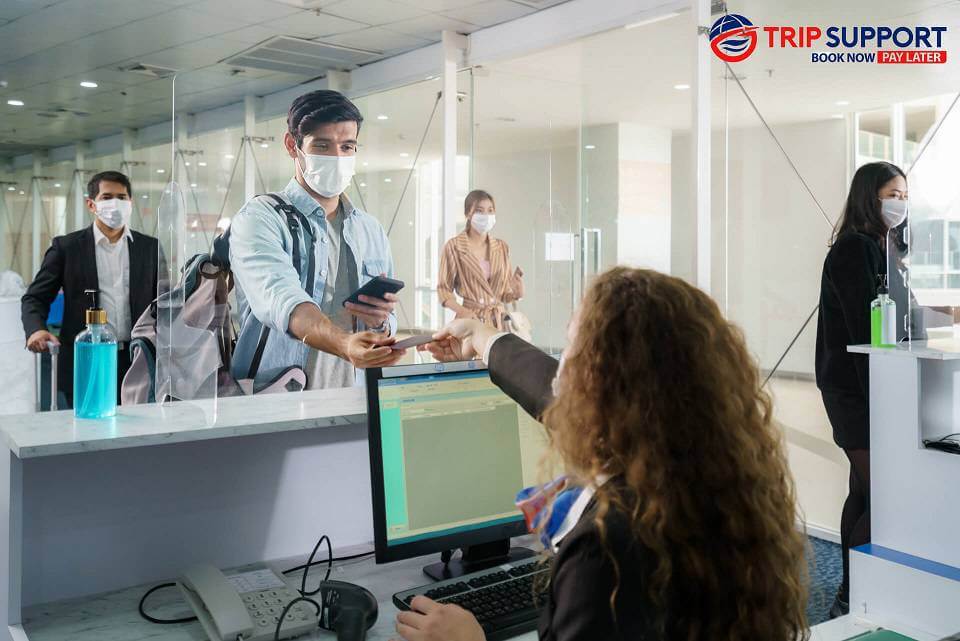
Why do you need it?
Having a Known Traveler Number when reserving a flight increases the probability of you using the TSAs PreCheck safety screening lanes at partner U.S. airports substantially. Your KTN also lets you utilize expedited customs processing at some participating airports in case you are a Global Entry member.
Your Known Traveler Number is like your club membership/ registration to a Trusted Traveler Program. A known traveler designation is what permits you to get the right of entry to TSA PreCheck safety lanes and Global Entry lanes. This is, however, subject to the Trusted Traveler Program you are a member of.
Getting a Known Traveler Number
There are certain programs you have to participate in to be eligible for a Known Traveler Number. These are:
You don’t have to fly regularly to know how much of a headache airport clearing processes are. Those who have gone through a TSA PreCheck will vouch for how different it is from the conventional airport clearance experience.
If this is your first time coming across this information, a TSA PreCheck Program is one of five trusted traveler programs. Of the five, four are meant for individual and business travel, but one program—FAST, is exclusive to commercial trucking businesses.
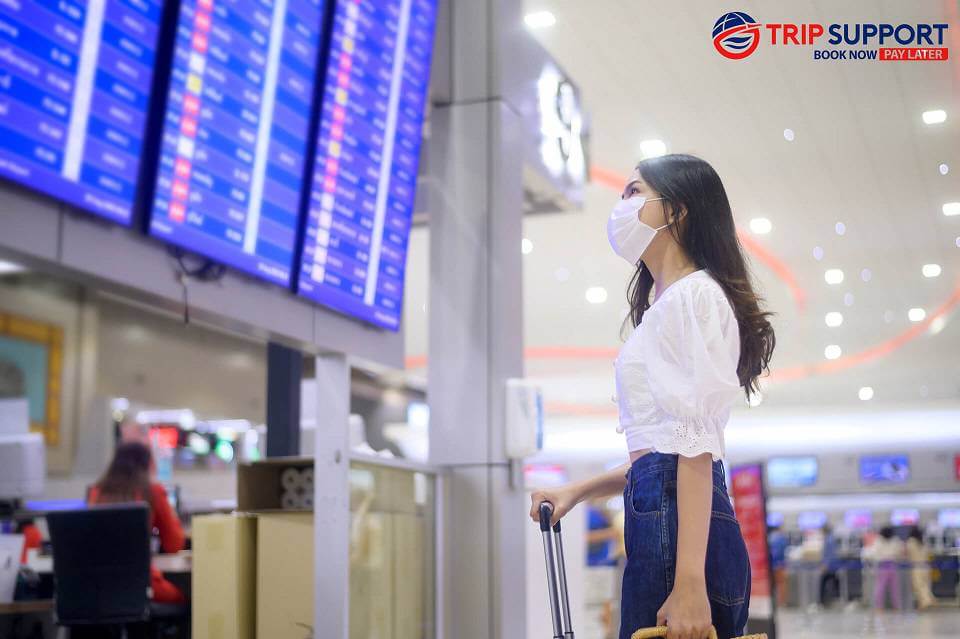
While the other programs are administered privately, TSA PreCheck is done by the U.S. Transportation Security Administration (TSA). Since the program began in 2001, the program has been making it easy for low-risk travelers to get through a security checkpoint, and many airlines have signed up for TSA PreCheck.
On busy days your Spirit Airlines Known Traveler Number or Norwegian TSA PreCheck or Known traveler number from a participating airline will mean that you may not have to take what you had packed through security. That said, you need to complete a membership application and await approval. Once approved, you get a 5-year active membership, which you can renew.
Global Entry is an expedited screening arrangement for persons coming into the U.S. from an overseas country. It basically pre-screens or does a background check on an applying member for potential red flags. This involves examining whether they have a criminal record in order to decide whether or not, now or in the future, the applicant might pose a threat to the country.
Global entry comes with a TSA PreCheck; hence if you are flying internationally, you can use your American Airlines known traveler number, air France TSA PreCheck, or JetBlue redress number, among many other Global entry programs from participating airlines.
A Global Entry interview happens at an enrollment center which you will find in major international airports globally. It involves some biometrics and a physical interview with a Customs and Border Protection (CBP) officer but once approved, you, too, can use a KTN number on your next flight.
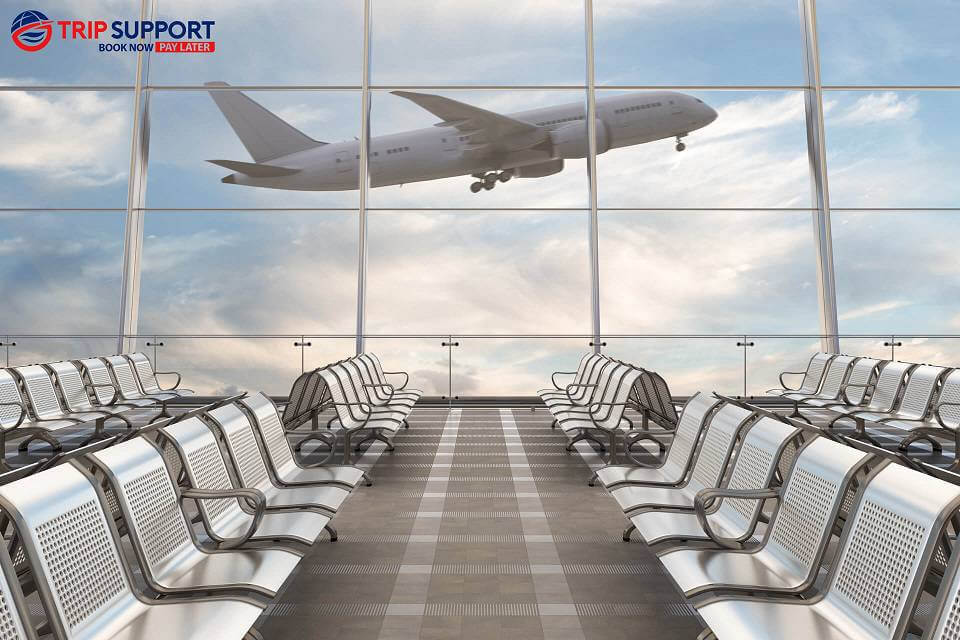
Secure Electronic Network for Travelers Rapid Inspection (SENTRI) is a trusted traveler’s program that provides modified security control processes for its members who have been approved prior to travel. SENTRI also offers significant improvements in overall security by making controls more efficient.
If you are on SENTRI, you can get into the U.S. through special lanes at select Southern land border ports. Another plus is that approved SENTRI participants can use NEXUS lanes when coming into the U.S. from Canada by land.
Using the SENTRI lane when entering through border points will make your traveling easy, but you can also add it as your KTN number when reserving a flight. It will also benefit you when getting into an airline’s frequent traveler program. A SENTRI pass will work in other countries like Germany, the Netherlands, UK, Panama, and Taiwan.
NEXUS provides a modified security process for pre-approved members; it is a nice way to beat the queues and be on your seat quickly. NEXUS, unlike SENTRI, is exclusive to those entering the United States or Canada. There are dedicated NEXUS lanes at airports and other points of entry, even by sea.
Simply ask for the NEXUS line at the point of entry to avoid the long wait times at security checks. To be eligible for NEXUS, you have to be a citizen or lawful resident of either the U.S. or Canada or a Mexican national who is a member of Viajero Confiable.
How do I know if I have a known traveler number?
You will only know you have a Known Traveler Number once you have applied for it and are confirmed by the issuing authority. You can check your KTN online or at the back of your NEXUS, SENTRI, or Global Entry Card.
That said, you must know that in the interest of security, the TSA randomizes checks, and sometimes even with a KTN number, you have to go through a security check.
You may also be subject to a check, your TSA PreCheck notwithstanding, if your names don’t match or you enter an incorrect KTN number. Once you iron out issues like booking through an agent or saving your KTN number on your frequent flyer profile, your KTN status is meant to be used.
Feel free to ask for directions to the KTN designated lanes at any participating airport and go straight through security. Always add it to your reservation record, and even when you print your ticket, you will see it indicated in your ticket. Your TSA PreCheck also makes it easy for the airline to make a follow-up if you have a problem on a flight since TSA retains the data for a while—3 days after you fly.
Trending Destinations
Having trouble deciding where you want to spend your dream vacation? Don’t worry, we can help you with that too!

CA$899 or from CA$50 / Weekly

CA$699 or from CA$40 / Weekly
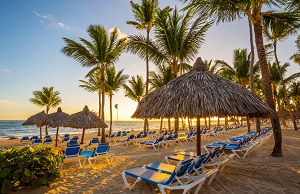
CA$749 or from CA$45 / Weekly

CA$949 or from CA$50 / Weekly

CA$999 or from CA$55 / Weekly
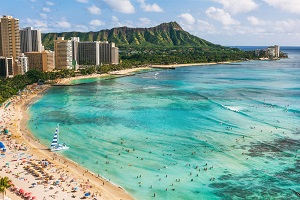
CA$1199 or from CA$60 / Weekly

CA$649 or from CA$35 / Weekly
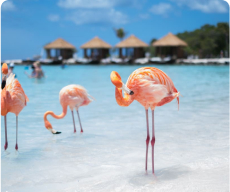
CA$1099 or from CA$55 / Weekly
Flight Deals

As low as CA$130.54 /weekly

As low as CA$20.24 /weekly
As low as CA$102.37 /weekly

As low as CA$127.06 /weekly

As low as CA$146.79 /weekly
Hotel Deals

Hotels in Caribbean
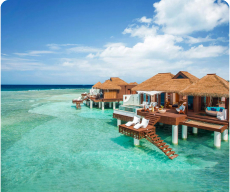
Canadian Hotels
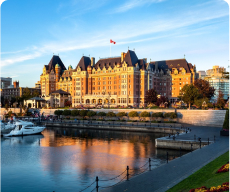
Hotels in Europe
Related Posts
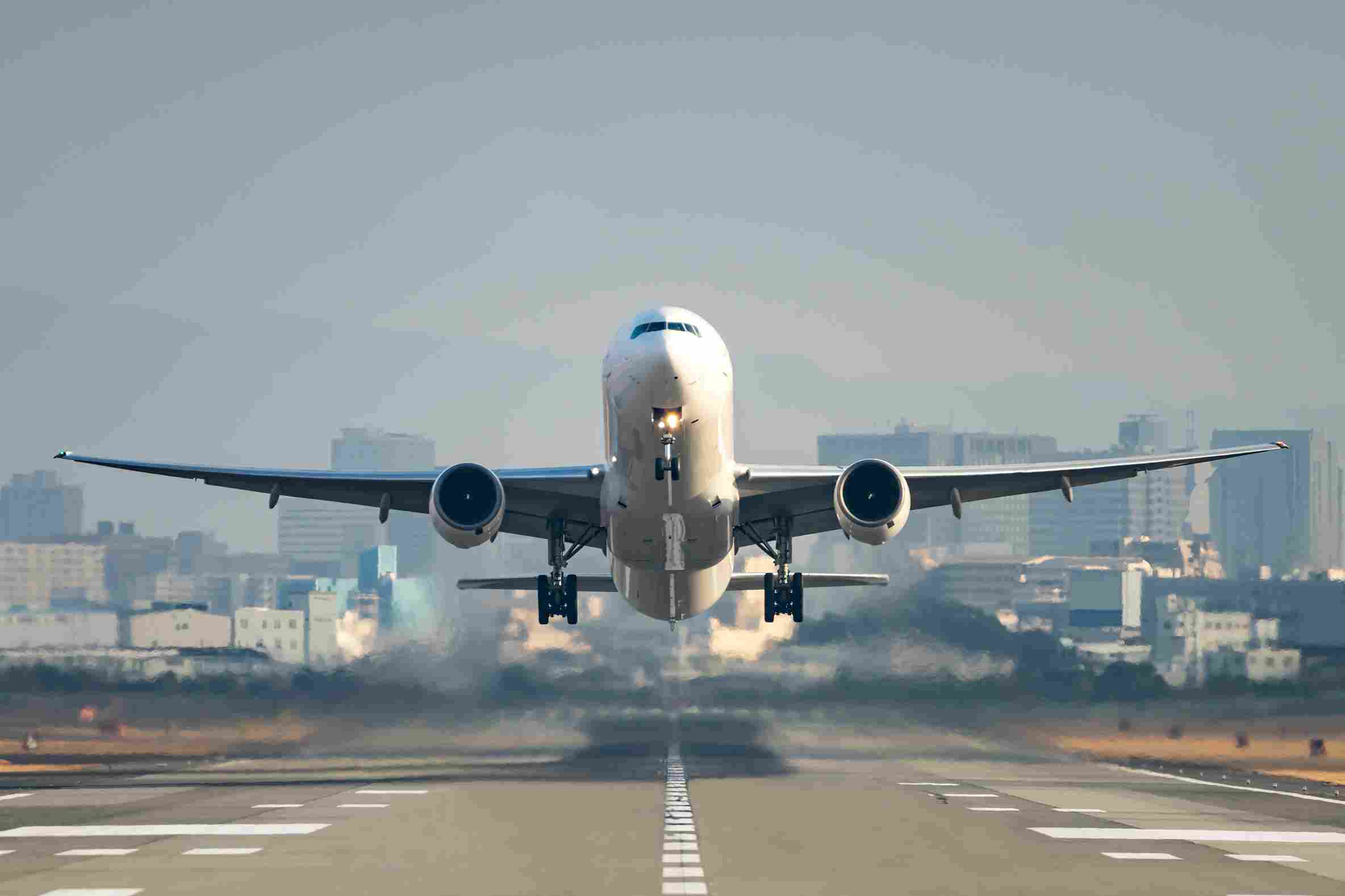
Basic vs Standard Air Canada: which is Better?
What is the dilemma faced by travelers when choosing basic and standard care from Air Canada? It is important to explore key factors such as price, flexibility, baggage policies, seat selection, and in-flight amenities. This guide aims to provide insights into which fare type aligns best with individual travel needs. By examining specific routes and […]

How to Reserve a Flight Without Paying the Full Amount
When you’re planning your next getaway, expenses can pile up quickly! Whether it’s the hotel, activities, transportation, or flights, many travel costs will charge you upfront to reserve your spot in advance. One of the main charges is often flights. However, there are ways to reserve a flight without paying! Keep reading to find out […]

7 Affordable All Inclusive Resorts with Waterparks
While the kids play, adults can indulge in their own kind of relaxation and leisure, from spa treatments to serene poolside lounging. This is the magic of going to all-inclusive resorts with waterparks. The kids can have their own space to play and tire themselves out, and the adults can take advantage to have some […]

Book with us and save
Secure your flight ticket, hotel reservation, or your vacation trip with a small deposit. no credit check needed..

Language selection
- Français fr
Where is my status in Canada document number?
On your interest to sponsor form , you were required to provide the number of your status in Canada document.
Make sure you submit the number of the same document you submit with your application, if you’re invited to apply. If the document number doesn’t match, we’ll return your application.
Note: If you submitted a non-Canadian passport with your interest to sponsor form and you’re invited to apply, you need to be a permanent resident when you apply to be eligible to sponsor. In that case, when you apply you must include:
- a copy of the foreign passport you submitted and
- one of the documents below
We use this to confirm your status in Canada.
See examples below of where to find your status in Canada document number:
Canadian birth certificate
Canadian citizenship certificate or card, confirmation of permanent residence (imm 5292 or imm 5688), permanent resident card, record of landing (imm 1000), secure certificate of indian status.
- Provide the Registration No.
- begins with 4 numbers (your birth year) and a hyphen,
- followed by 2 numbers and a hyphen, and
- ends in 6 numbers.
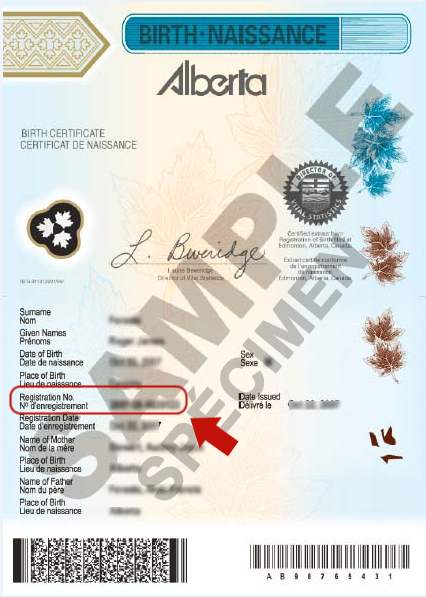
British Columbia
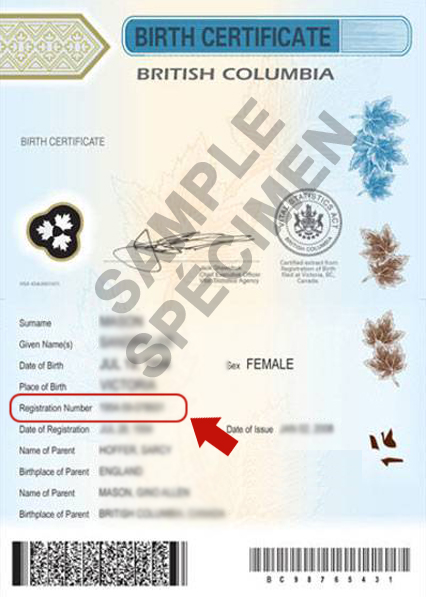
- Provide the Registration No. / N o d’enregistrement
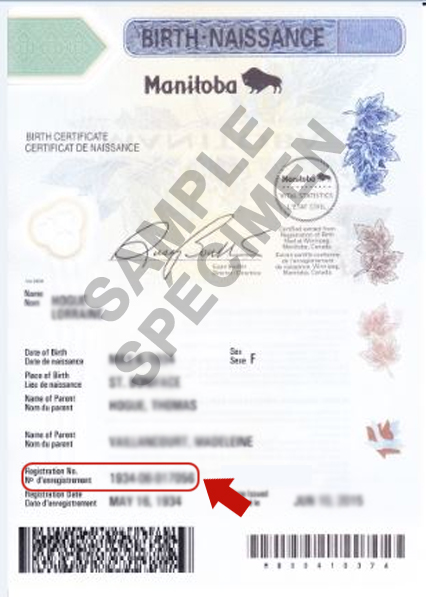
New Brunswick
- begins with 4 numbers (your birth year) and a space,
- followed by 2 numbers and a space, and
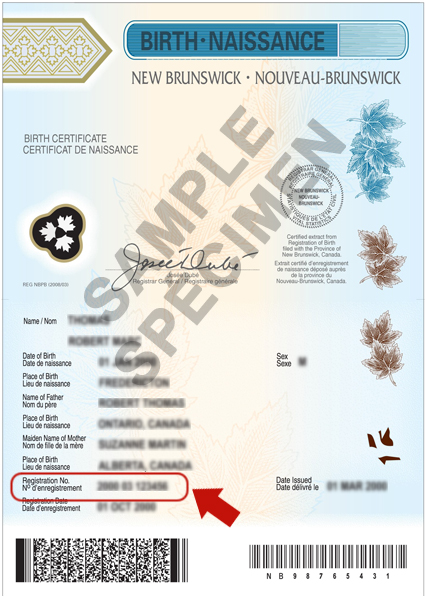
Newfoundland and Labrador

Northwest Territories
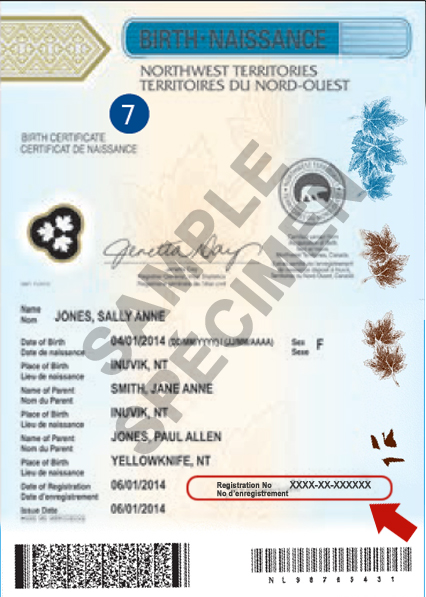
Nova Scotia
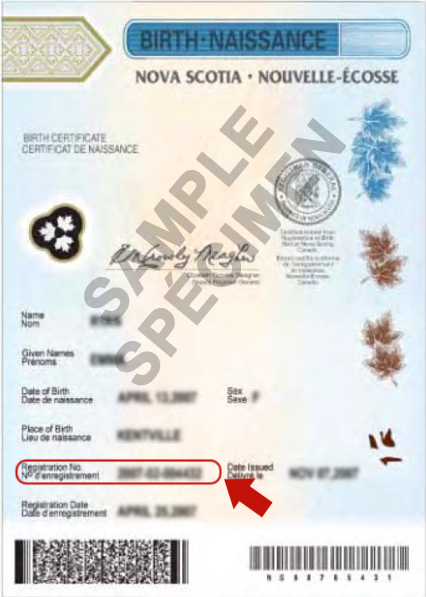
- Image not available
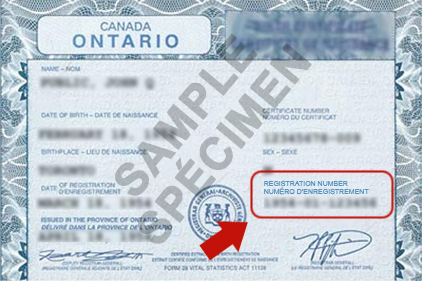
Prince Edward Island

Quebec birth certificate
- Provide the N o d’inscription .
- It has 13 numbers.
- We’ll only accept birth certificates issued by the Directeur de l’état civil .
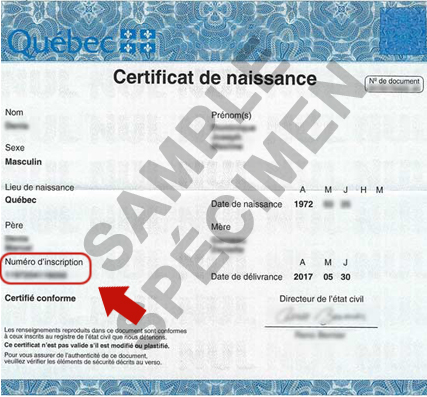
Saskatchewan
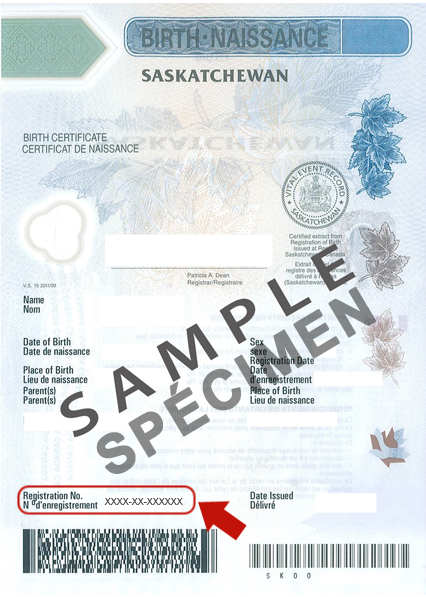
- It’s at the back of your citizenship certificate, under the heading Description – Signalement .
- begins with 1 letter, and
- ends in 7 numbers.
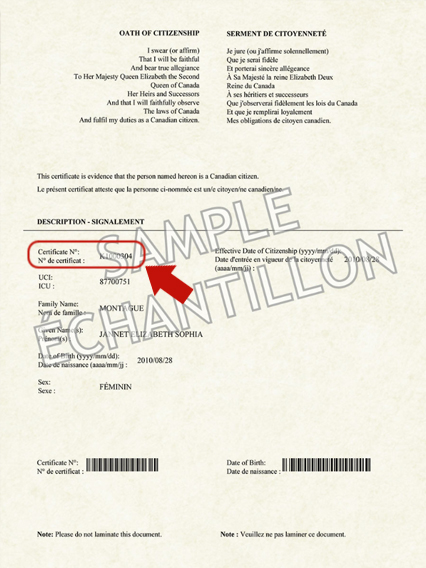
If you don’t have your citizenship certificate or card, you can apply for a
- citizenship certificate urgently (we no longer issue citizenship cards), or
- search of citizenship records urgently
Canadian passport
- Provide the Passport No. / N o de passport
- You can find this number on your passport information page, on the top right corner, or on the bottom left corner
- begins with 2 letters, and
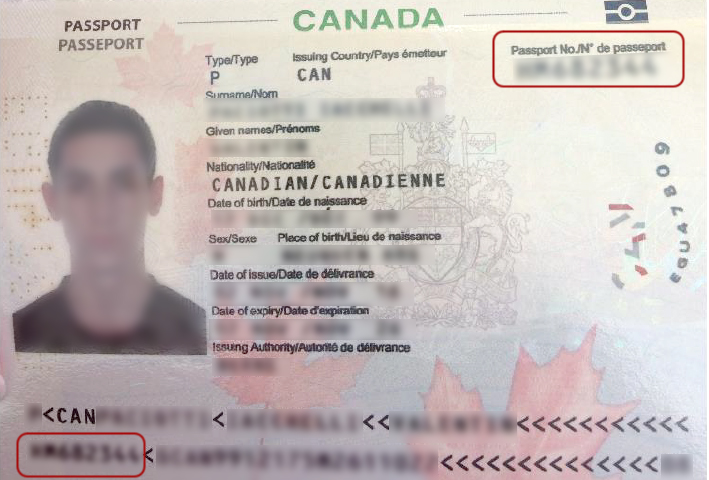
- Provide the Document No.
- begins with the letter T, and
- ends in 9 numbers.
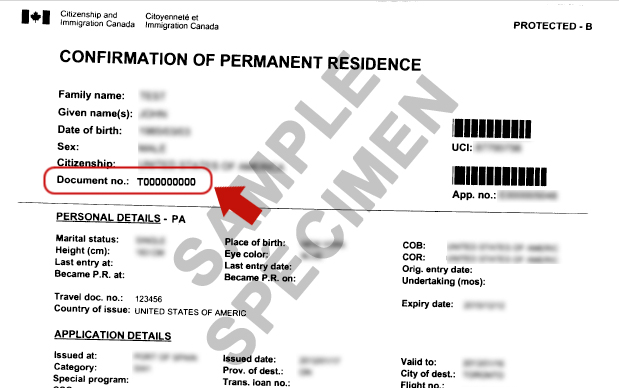
- Provide the ID No. / N o ID.
- begins with 4 numbers and a hyphen, and
- ends in 4 numbers.
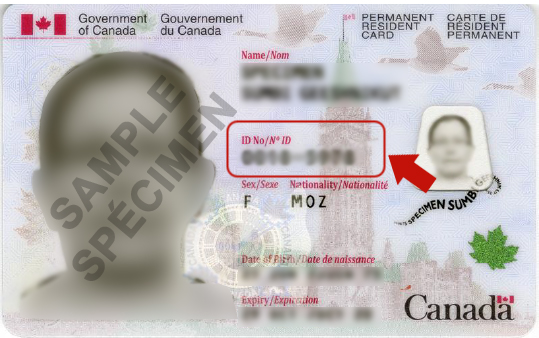
- Only use this document as your proof of status in Canada document if you didn’t receive a permanent resident card.
- Provide your Record of Landing number
- It starts with a W, followed by nine numbers.
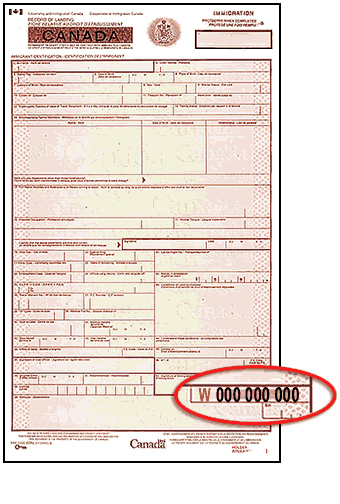
- It has 10 numbers.

Did you find what you were looking for?
If not, tell us why:
You will not receive a reply. Telephone numbers and email addresses will be removed. Maximum 300 characters
Thank you for your feedback
Answers others found useful
- What is a complex family sponsorship application?
- For my IRCC spousal sponsorship application, what is a common-law partner?
- What are the changes to the spousal sponsorship program?
- Am I affected by the changes made to reduce spousal sponsorship wait times?
- How can I sponsor my spouse or children?
- Which family members can come with me to Canada when I immigrate?
- How can I include a dependent child on my application?
- I already became a permanent resident. Can I still add my dependent child to my application?
- What counts as income for sponsoring my parents and grandparents?
- What’s considered social assistance when sponsoring my parents and grandparents?
- What proof do I need for changes to my information after I was invited to apply to sponsor my parents?
- What if my birth certificate is different from other documents (or I don’t have one)?
- I was invited to apply to sponsor my parents, but didn’t get an email confirmation. How do I get it?
- Will you refuse my application if I put a different parent than on my interest to sponsor form?
- Do I need a marriage certificate for my parents/grandparents sponsorship application?
- I’m sponsoring my parent. I don’t know where their separated spouse is. How do I apply?
- Do I include time on parental leave in my employment history for sponsoring my parents?
- What do I put for the date of birth (or death) of my family member if I don’t know it?
- How can I quickly get information about my Canadian citizenship to sponsor parents/grandparents?
Glossary term
- Principal applicant
- Tour Operators
- Destinations
- Hotels & Resorts
- Agent Feedback
- Deals & Incentives
- On Location
- Industry Experts
- Sphere – HomeBased
- Digital Editions
- Subscribe today!
- Hotels and Resorts
- Types of Travel
- Subscribe Now
Hundreds of air travellers using special code to avoid Canadian no fly list snags
Post date: Feb 2 2022
Date: Feb 2 2022
By: The Canadian Press
OTTAWA — More than 850 people have been assigned a special number to help avoid being inadvertently ensnared by Canada’s no-fly list.
A dozen of these travellers have been cleared to board an aircraft as a direct result of having the personal code since the program began in November 2020, says Public Safety Canada.
The department has touted rollout of the Canadian Travel Number as a key step in revamping passenger screening procedures after many young children were stopped at airports because their names are the same as, or close to, ones on the no-fly roster.
Passengers who have experienced difficulties can apply for a travel number via the Public Safety website to help avoid false matches when booking flights to, from or within Canada.
The government requires air carriers to send a passenger’s name and date of birth as early as 72 hours before a flight so that their identity can be verified and any false name match can be resolved in advance.
The government is now responsible for screening passengers against the Secure Air Travel Act watchlist, commonly known as the no-fly list.
Federal officials inform the air carrier should there be any additional screening requirements or an outright prohibition on allowing the person to fly.
Upon introducing the system, the government said it would improve the security of air travel and protect passenger privacy since airlines, which long used the no-fly list for screening, would no longer have direct access to it.
Together, the travel number and centralized screening limit “any potential unconscious bias associated with human screening and inconsistent screening methods while enhancing fairness for legitimate air travellers,” Public Safety spokesman Nic Defalco said in response to questions from The Canadian Press.
As of Jan. 20, more than 1,200 Canadian Travel Number applications had been received and 859 issued, Public Safety said.
The majority of people who asked for a number were between the ages of 31 and 60. Just six per cent of applications were for children. About 70 per cent of applicants identified as male and the same percentage were Canadian citizens.
Centralized screening has helped resolve most false matches to names on the no-fly roster without use of a Canadian Travel Number, Defalco said.
“So far, 12 passengers have been cleared with the use of a CTN, which means these individuals benefited from having a CTN as an additional piece of information to help verify their identity. Additionally, there were no false name matches for children under the age of 16.”
The travel number and screening changes came after several families with young children raised concerns about nerve-racking airport delays because their child’s name appeared to match one on the no-fly list.
Khadija Cajee, co-founder of No Fly List Kids, said while she is aware of some people applying for the new travel number, the fact many families have not been flying during the COVID-19 pandemic means it is difficult to tell how the system is working.
Cajee’s young son Adam has repeatedly faced snags checking in for a flight, but she has not yet applied for a travel number on his behalf. She is waiting to see if the centralized screening changes alone will remedy the problem.
“I’m still really curious to know if he can get by without actually having to apply for the number to begin with,” Cajee said. “If it comes to the point where he’ll have to apply for it, then we’ll do it for him.”
Cajee said while the system revamp is welcome, she has come to believe Canada’s no-fly list should simply be abolished.
“When you have a list, that list always targets somebody. And inevitably there are going to be a lot of innocent people targeted on this list,” said Cajee, a member of the federally appointed National Security Transparency Advisory Group, which counsels agencies on implementing their openness commitments.
“I think what the government is saying is that this individual is too dangerous to fly, but not too dangerous to roam our streets.”
Sarah Willson, whose husband and son have experienced airport delays, said her family is also waiting to see how their next flights go before applying for travel numbers.
The government has cautioned that a travel number will not prevent delays if the airport problem is related to a different program, such as another country’s security list.
Willson, who is also active with No Fly List Kids, said the group has asked Public Safety Minister Marco Mendicino for data related to the various other activities at airports such as pre-flight security screening and secondary customs inspections.
“There’s a whole bunch of reasons why people are getting flagged.”

Tags: CTN, Lead Story

Call Coaching Feature Is
Monitor agents' performance, provide trainings & facilitate real-time 3-way calls with clients.
Zapier Integration is
KrispCall now supports Zapier Beta! Connect & elevate your workflow seamlessly
- Phone Number
Canadian Phone Number Format: A Complete Guide
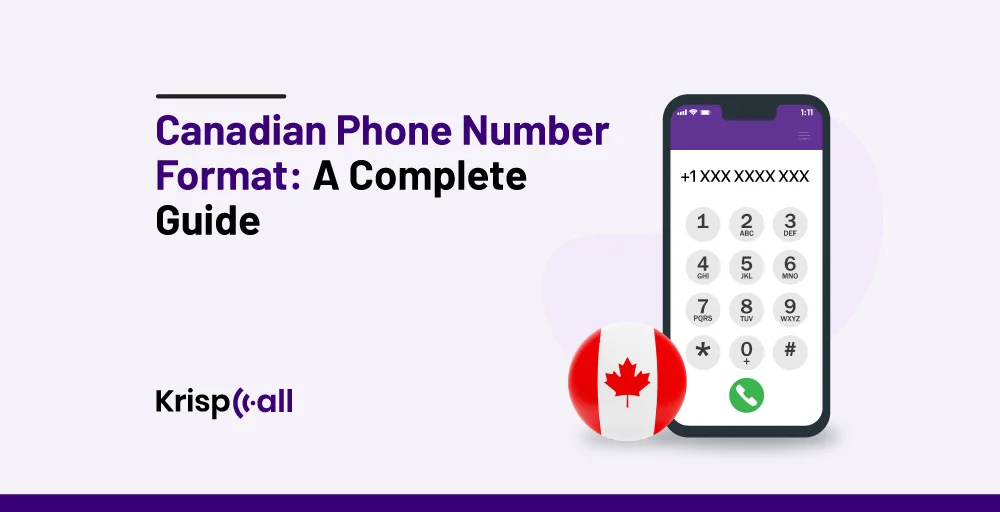
Are you encountering obstacles or confusion in connecting with Canadian consumers, friends, relatives, or others due to an unclear understanding of the Canadian phone number format?🤔
While eliminating this challenge may be pricey💸 , we’re here to help. Our complete guide on Canadian phone number format can help you boost brand visibility and drive sales in Canada; all you need is a Canadian phone number for online communication.
Through this blog post, we aim to provide a comprehensive analysis of Canadian phone Numbers, including details on format, area codes, time zone implications, call-related issues, and the advantages offered by virtual phone numbers.
🔑Key Highlights
- Canadian phone Numbers consist of 11 digits, followed by country, area, exchange, and station codes.
- An Area Code helps identify a specific geographic region within Canada.
- Canada has Local, Mobile, Toll-free, Vanity, and Emergency phone numbers.
- Make a call to Canada, considering the proper time zone.
- Airplane mode, switch off, not enough minutes, incorrect dialing patterns, and rural connectivity challenges can make you unable to connect calls to Canada.
- KrispCall is the leading Canadian Phone Number provider.
Table of Contents
What is the Legit Canada Phone Number Format?
Canadian Phone number is a type of number that generally consists of 11 digits with a 3-digit area code. Canadian Phone numbers look similar to US numbers since they both have a +1 country code or 011 when you call from a landline number, followed by a three-digit area code and a seven-digit number.
Canadian Phone numbers follow the fixed-length format of the North American Numbering Plan (NANP) of a three-digit area code or exchange code and a four-digit station or line code represented as NPA-NXX-XXXX. Canadian phone numbers are ten digits long, three digits being area code and the other seven digits as a phone number.
The three main components required in a Canadian Phone Number are:
- Country code: Country code is defined as a numeric geographic code or short alphabetic names for countries and their dependent areas, which are helpful for programming, communication, data processing, and aviation. Canada’s country code is 1, which you can call a foreign country.
- Area code: Area Code is a three-digit number that denotes a specific geographic region to make communication within a network more efficient. Smaller areas share an area code, whereas big cities have multiple area codes.
- Line number: Line number refers to the last four digits of a 10-digit phone number. The line number usually identifies an individual line connected with the area code and telephone prefix. However, the line number does not recognize the particular phone model or hardware.
Canada’s complete phone number format consists of 11 digits, followed by country code +1, a 3-digit area code, a 3-digit exchange code, and a 4-digit station or line code. The format for a Complete Phone number in Canada is +1 (XXX) XXX-XXXX or +1-XXX-XXX-XXXX.
Below are examples of the myriad Canadian Phone numbers, along with their formats:
- Local or Landline Number: +1 (XXX) XXX-XXXX
Example: +1 613-957-2991
- Toll-Free Number: 1 800 XXX-XXXX
Example: 1-8—837-6486
- Mobile Number: +1 (XXX) XXX-XXXX
Example: +1 613-722-7000
- Vanity Number: Different formats
Example: +1-8–00-TERMIUM
What are the area codes for the Canada Phone Number Format?
An Area Code is the initial set of three-digit numbers for identifying a specific geographic region within Canada. Area codes are essential when calling Canada to route calls to specific geographic areas within a country.
Here is a list of the provisions, the main cities within the provision, and their area code.
Different Phone numbers available In Canada
There are various phone numbers available in Canada, from Local Phone Numbers to Emergency Phone Numbers. The following section discusses the different phone numbers that are provided in Canada:
Get a Canadian Virtual Phone Number Online.
Get international canadian phone number for calls, SMS Verification & more.
Select numbers :
1. canadian local phone number .
Canada Local Phone Number is a type of phone number available in Canada that follows the standard format of ‘(+1) Country Code+ (XXX) Area Code +(XXXX) Local Number’.
For instance, Brazilian Canadian Coffee Co. is a business in downtown Toronto, Ontario, whose number is +1 (416) 749-2000
2. Canada Mobile Phone Number
Canada Mobile Phone Number is a type of phone number in Canada that follows a similar format as a local phone number of ‘(+1) Country Code+ (XXX) Area Code +(XXXX) Local Number’. However, the area code for mobile phone numbers differs from that of local ones.
For Example: Maple Leaf Tours from Kingston, Ontario’s mobile phone number is: +1 (613) 384-0012
3. Canada Toll-free Number
Canada Toll-free number is a number that lets callers in Canada contact a business without incurring any money to pay. Canada Toll-free number’s format includes (1) Country Code+ (XXX) toll-free Code + (XXX) the local number.
For instance, Maple Leaf Tours is based in Kingston, Ontario’s toll-free number is 1-866-384-0012

4. Canada Vanity Phone Number
Canada Vanity Phone Number usually consists of a memorable sequence of numbers or letters that denotes the company’s name or service. The format of the Canadian vanity phone number with the business name is (1) Country Code+ (XXX) toll-free Code + BUSINESSNAME.
The vanity phone number of the Canadian-based junk removal company is +1 (800) GOT-JUNK.
5. Canada Emergency Number
Canada Emergency Number is useful for reporting accidents, crimes in progress, medical problems, or fires.
The emergency number for Canada is just a three-digit number that is 911 . This number is routed to the local public safety, who will promptly answer with immediate assistance.
What is the Best Time To Make Business Calls In Canada?
A time zone is a region of the globe that uses a uniform standard time for various purposes, such as legal, commercial, and social purposes.
Different time zones are required because other parts of Earth enter and exit daylight🌄 at different times. Time zones generally vary on country and subdivision boundaries rather than longitude since it is more convenient for areas that communicate frequently to use a similar time🕒.
Time zones affect significant business calls from different countries by creating communication gaps, delays, and scheduling conflicts, directly affecting worker productivity and customer service.
Because of Time zones, during the daytime working hours of one country, others experience nighttime, which causes an obstacle for business.
Therefore, we have listed the different Canadian and best time zones for Standard Time and Daylight Saving Time for effective communication coordination across the regions.
Making Calls from the USA to Canada:
5 Reasons why you are unable to connect your calls to Canada
Sometimes, you need help connecting your calls to Canada for various connectivity issues. Below are the top five reasons you face challenges while connecting your calls to Canada.
- Rural Connectivity Challenges: Usually, in rural and remote areas of Canada, there is a need for more proper internet services, causing slow speeds and unreliable connections, which makes it challenging for individuals of Canada living in such regions to get high-speed internet.
- Incorrect Dialing Pattern: If you are not using the correct dialing pattern, your call may not go through. The right pattern for calling Canada is dialing your country’s exit code, country code 1, area code, and phone number.
- Not enough Minutes: You cannot complete your call if you don’t have enough overseas long-distance minutes in your subscription. Therefore, check with your service provider to see if you have enough minutes to call Canada.
- Switch off: You cannot connect your calls to Canada if the person you call has turned off their phone or if their phone’s battery has died. So, try contacting again after a while or send a text message or email instead.
- Phone in airplane mode: You cannot connect the calls to Canada if the person you are trying to reach has their phone in airplane mode since airplane mode turns off all wireless communication on a device, including cellular and Wi-Fi connections.
How do I call Canada’s Phone Number using KrispCall?
A virtual phone number can help when calling Canada since it is not tied to a specific physical phone line or device.
You can obtain Canada virtual phone numbers from one of the most reliable providers, KrispCall, which offers numerous services, including local, mobile, and toll-free virtual phone numbers from more than 100 countries.
KrispCall helps you call Canada’s phone number by allowing you to access it from anywhere with an internet connection.
To make a call in Canada using the virtual phone number of KrispCall, you need to follow the below steps:
- First and foremost, create a KrispCall account by signing up and logging in to the KrispCall account.
- Secondly, choose Canada from the list of over 100 countries.
- Then, enter the city or state for your phone number.
- After that, select the type of phone number you need, whether local, mobile, or toll-free.
- Now, make the payment after selecting the number.
- After getting the Virtual phone number from KrispCall, dial the Canadian Phone number manually.
- Finally, press the call button to initiate the call using KrispCall’s service.
Benefits of using KrispCall for Canadian phone numbers
With the use of KrispCall for Canadian phone numbers, one can get many advantages, like the flexibility of making and receiving calls and staying connected from anywhere at any time. Some of the benefits of using KrispCall for Canadian phone numbers are listed below:
- Global reach: You can achieve global reach by establishing a local presence in Canada without physically staying there. This will lead to reaching new markets and growing clients throughout the country.
- Cost Savings: KrispCall provides competitive pricing plans that eventually help you save up to 50% on call charges compared to traditional telephone services by avoiding expensive equipment purchases and maintenance fees.
- Scalability: KrispCall provides scalability by scaling your business operations effectively as it adds or removes phone numbers as required without having to worry about managing complex infrastructure.
- Flexibility: A Canadian virtual number you get with the use of KrispCall can help make and receive calls from any device with an internet connection, which will be convenient for remote workers, travelers, and businesses without physical presence in offices.
- Unmatched Features: You can access numerous call management features to manage your business, including voicemail efficiency, business phone number , call forwarding, call routing, live call monitoring, customer caller ID, voicemail transcription, virtual attendant, etc.
Ready to experience all the benefits of KrispCall? Register today to get started!
To all travelers, business owners, or anyone reading this, Knowing Canadian phone numbers is crucial for staying connected with loved ones, getting university support, and reaching emergency services. Understanding the proper format for Canadian phone numbers, such as the country’s area code and various Canadian phone numbers, along with knowing the reasons for making calls to Canada fails, can be very beneficial for callers.
Remember to understand time zone differences to stay on your calls while traveling or doing business worldwide. Oh, and for all your Canadian calling needs, KrispCall is here to help with great options and top-tier customer support. Take advantage of the free KrispCall Demo and explore its offers!
What is the standard format for the Canadian phone number?
The standard format for the Canadian phone number is ten digits; the first three digits are the area code, and a hyphen separates the remaining seven numbers.
What is the area code for Canada?
The area code for Canada is 1. It has several provinces with their area codes:
- Alberta:790.825,587,403
- British Columbia:250,604,236,672,778
- Manitoba: 431, 204
- New Brunswick: 506, 428
- Newfoundland and Labrador: 709
- Northwest Territories: 867
- Nova Scotia: 902, 782
- Nunavut: 867
How much does it cost to call an American number?
To call an American number costs depending on the service provider. However, the introductory rate to name an American number is $0.05 per minute from a landline without an international calling plan. But calling a mobile phone costs around $0.11–$0.17 per minute.
How do I get a free Canada phone number?
Use VoIP services such as KrispCall, CallHippo, and Google Voice to get a free Canada phone number.
Does Canada use +1 for a phone number?
Yes, Canada uses +1 for a phone number.
Can you get a fake Canada phone number for number verification?
Yes, you can get a fake Canadian phone number for number verification through various online services that offer virtual phone numbers. However, that is against terms of service and considered unethical.
Arun Chaudhary
Arun is SEO Analyst at KrispCall. He has written in extensively in the field of cloud telephony and call center solutions.
Follow our newsletter !
Related blogs.
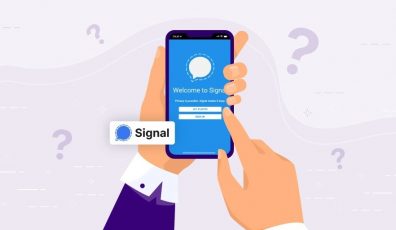
How to Use Signal Without Phone Number?
Are you looking 👀 for a way to use Signal without a phone number? There are..
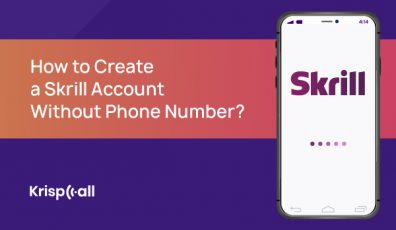
How to Create a Skrill Account Without a Phone Number?
Do you want to create a Skrill account but don’t have a phone number? Don’t..
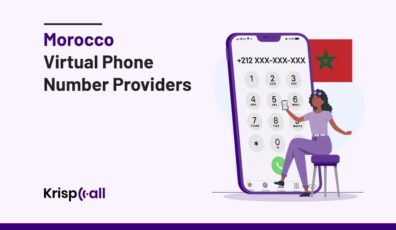
Top 5 Morocco Virtual Number Providers in 2024
Want to get in touch with someone in Morocco or looking for a way to expand your business in Morocco and reach out to the target audience?

An official website of the United States government
Here’s how you know
Official websites use .gov A .gov website belongs to an official government organization in the United States.
Secure .gov websites use HTTPS A lock ( Lock A locked padlock ) or https:// means you’ve safely connected to the .gov website. Share sensitive information only on official, secure websites.
What is a Known Traveler Number (KTN)?
A Known Traveler Number (KTN) is issued to all individuals approved to receive TSA PreCheck® expedited screening. The KTN must be added in the KTN field when booking airline travel reservations to have the TSA PreCheck® indicator appear on your boarding pass.
For members approved for the TSA PreCheck® Application Program, this number is 9 or 10 digits long, can be a combination of numbers and letters and typically begins with TT for those who enrolled through IDEMIA or TE for those who enrolled through Telos both which are official TSA PreCheck® enrollment providers.
For members approved for Global Entry, NEXUS, or SENTRI, the KTN is the CBP PASS ID number. This nine-digit number usually begins with 10, 13, 14, 15, 16, 50, 70, 80, 95, 98, or 99 and can be found on the back of your NEXUS, SENTRI, or Global Entry card in the upper-left corner or by logging on to the Trusted Traveler Programs website. Your trusted traveler card will not grant you access to TSA PreCheck® lanes, instead you must add your PASS ID number in the KTN field when making airline reservations to ensure the TSA PreCheck® indicator appears on your boarding pass.
- Skip to main content
- Skip to footer
Language Selection
- Français
On-Line Services
Identification number.
Each identification type will have its own unique identification number. To find this number on your correspondence or official document(s), refer to the identification type below for assistance in locating the identification number.
Client ID Number / Unique Client Identifier
You will find this number, also referred to as a Unique Client Identifier , on official documents issued to you from a Immigration, Refugees and Citizenship Canada office, Case Processing Centre or visa office where you submitted your application. Your Client ID Number/Unique Client Identifier has four (4) numbers, a hyphen (-), and four (4) more numbers. (Example: 0000-0000).
Application Number/Case Number
You will find this number, also referred to as an Application Number , on any official document issued to you from the visa office where you submitted your application. Your Application Number/Case Number starts with a letter and is followed by a combination of nine (9) numbers or letters. (Example: B000000000 or EP00000000).
Citizenship File Number/Group Number
You will find this number on all correspondence (except for the initial acknowledgement letter) mailed to you by the Case Processing Centre in Sydney or by the local Immigration, Refugees and Citizenship Canada office processing your application. This number is all digits. (Example: 0000000).
Permanent Resident Card number
Your Permanent Resident Card number is located in the top right corner on the back of your card. The Permanent Resident Card number starts with two (2) letters followed by ten (10) numbers (Example: RA0302123456) or two (2) letters followed by seven (7) numbers (Example: PA0123456).

Receipt Number
You will find this number on the acknowledgement letter that Immigration, Refugees and Citizenship Canada sent to you. This number is all digits (Example: 000).
Receipt Number (IMM 5401)
You will find this number on the document that was filled out and stamped when you paid your fees at a financial institution or on the official receipt you obtained when you paid your fees on the Internet. Your Receipt Number (IMM 5401) ; starts with a letter, followed by nine numbers. (Example: B000000000).
Record of Landing (IMM 1000) number
You will find this number in the remarks ; section on the bottom right of the Record of Landing document issued to you by a Immigration, Refugees and Citizenship Canada office or by the visa office where you submitted your application. Your Record of Landing number starts with a W ; followed by nine numbers. (Example: W 000 000 000).
Confirmation of Permanent Residence number (IMM 5292 or 5509)
You will find this number in top right corner of your Confirmation of Permanent Residence document issued to you by a Immigration, Refugees and Citizenship Canada office or by the visa office where you submitted your application. Your Confirmation of Permanent Residence number starts with a "T" followed by nine numbers. (Example: T100000000).
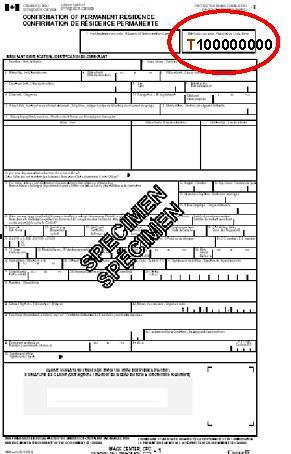
Thank you for your help!
You will not receive a reply. For enquiries, please contact us .
PRD Version 6.11.0_b1 Date: 2023-10-18 10:03
- Skip to main content
- Skip to "About this site"
Language selection
- Français fr
Regulations Amending the Secure Air Travel Regulations and the Designated Provisions Regulations: SOR/2022-225
Canada Gazette, Part II, Volume 156, Number 23
Registration SOR/2022-225 October 28, 2022
SECURE AIR TRAVEL ACT AERONAUTICS ACT
P.C. 2022-1165 October 28, 2022
Her Excellency the Governor General in Council, on the recommendation of the Minister of Public Safety and Emergency Preparedness, makes the annexed Regulations Amending the Secure Air Travel Regulations and the Designated Provisions Regulations pursuant to
(a) section 32 footnote a of the Secure Air Travel Act footnote b ; and
(b) subsection 7.6(1) footnote c of the Aeronautics Act footnote d .
Regulations Amending the Secure Air Travel Regulations and the Designated Provisions Regulations
Secure air travel act, secure air travel regulations.
1 (1) The definition unique identifier in section 1 of the Secure Air Travel Regulations footnote 1 is repealed.
(2) Section 1 of the Regulations is amended by adding the following in alphabetical order:
2 Subsection 2.1(1) of the Regulations is replaced by the following:
Collection of information
2.1 (1) An air carrier must, no later than 72 hours before the scheduled time of departure of a domestic flight or international flight, collect the information set out in paragraphs 6(2)(a) to (c) of the Act about each person who is expected to be on board the aircraft for the flight.
Canadian Travel Number
(1.1) An air carrier must provide to each person referred to in subsection (1) an opportunity to provide their Canadian Travel Number at the time of reservation and at check-in.
Collection of Canadian Travel Number
(1.2) If a Canadian Travel Number is provided in accordance with subsection (1.1), the air carrier must collect it as soon as it is provided to them.
3 Paragraph 2.3(c) of the Regulations is replaced by the following:
- (c) their Canadian Travel Number, if they have one;
4 Subsection 2.4(1) of the Regulations is amended by adding “and” at the end of paragraph (a) and by replacing paragraphs (b) and (c) with the following:
- (c) if there is any new information that has not already been provided under paragraph (a) or any change to the information that has already been provided to the Minister, as soon as feasible after the air carrier makes the change or becomes aware of the new information or the change but before the scheduled time of departure of the aircraft.
5 (1) The portion of subsection 2.6(3) of the Regulations before paragraph (a) is replaced by the following:
Verification of identity
(3) If the person presents themselves at the air carrier’s check-in desk to obtain a boarding pass for the flight in question, the air carrier must, before providing information about the person to the Minister in accordance with paragraph 2.4(1)(c), verify the person’s identity using a piece of identification that is acceptable under subsection 3(1) or section 4, as the case may be, and must compare
(2) Subsection 2.6(4) of the Regulations is replaced by the following:
Information discrepancy
(4) If the comparison reveals a discrepancy between the information on the person’s identification and the information in their reservation record, the air carrier must not issue a boarding pass to the person pending a response from the Minister with respect to the information that has been provided in accordance with paragraph 2.4(1)(a) or (c), as the case may be.
6 Subsection 3(2) of the English version of the Regulations is replaced by the following:
Alternative identification — loss or theft
(2) In the event that a passenger’s identity cannot be verified in accordance with subsection (1) because of the loss or theft of one or more pieces of their identification, the air carrier may verify their identity using other pieces of valid identification such as their employee identity card, public transit pass or baptismal certificate if the passenger presents the identification in conjunction with documentation issued by a government authority or a police service that attests to the loss or theft.
7 Section 10.11 of the Regulations is amended by striking out “or” at the end of paragraph (b) and by replacing paragraph (c) with the following:
- (b.1) a Canadian Travel Number is provided;
- (b.2) in the case where a Canadian Travel Number has been provided, there has been a change to it since it was provided to the Minister; or
- (c) any of the information about the person that is provided under paragraphs 6(2)(a) and (b) of the Act has significantly changed since it was provided to the Minister.
8 Subsection 10.2(1) of the Regulations is replaced by the following:
Resolution of interruption
10.2 (1) For the purposes of subsection 6(2) of the Act, if, because of an interruption of an air carrier’s or the Minister’s electronic communications system, the information that is required to be provided about a person who is expected to be on board the aircraft cannot be provided in accordance with subsection 2.5(1) of these Regulations at any of the times prescribed in paragraphs 2.4(1)(a) and (c) of these Regulations, the prescribed time is as soon as feasible after the resolution of the interruption.
9 The portion of section 11 of the Regulations before paragraph (a) is replaced by the following:
Information — removal and destruction
11 Every air carrier must, by March 4, 2023,
10 The Regulations are amended by adding the following after section 11:
Information collected by air carrier
12 (1) The Minister may collect any information that an air carrier referred to in subsection (2) collects and provides to the Minister about each person who is expected to be on board an aircraft for a flight set out in that subsection operated by that air carrier.
Application of section 12
(2) This section applies only to air carriers that are referred to in subsection 6(1) of the Act and that operate domestic flights or international flights if the passengers, the property in the possession or control of the passengers and the personal belongings or baggage that the passengers give to the air carrier for transport are not subject to screening carried out before boarding.
Aeronautics Act
Designated provisions regulations, coming into force.
13 These Regulations come into force on the day on which they are registered.
REGULATORY IMPACT ANALYSIS STATEMENT
( This statement is not part of the Regulations .)
The Secure Air Travel Act (SATA) and the Secure Air Travel Regulations (SATR) were amended in 2019 to enhance the Passenger Protect Program (PPP). During the implementation of enhancements to the program in 2020–2021, Public Safety Canada (PS) discovered a number of operational issues that required minor adjustment to the SATR to ensure the program runs optimally. In addition, the 2019-nCoV acute respiratory disease (COVID-19) pandemic had significant impacts on air industry operations, which created delays for some air carriers in onboarding to the enhanced PPP. An amendment to the SATR was needed to provide more time to air carriers that require it to transition to the new system.
Canada uses a variety of tools to mitigate threats to national security and aviation transportation involving air travel to, from, and/or within Canada. These tools have evolved over time in relation to changes in threats to public safety and security, and the best practices of international partners. The PPP is an example of one such tool.
Passenger Protect Program
The PPP was implemented in 2007 to prevent individuals who may pose a threat to air security, or travel by air to commit an act of terrorism from boarding a plane flying to, from or within Canada. The PPP is administered by PS and Transport Canada (TC), in cooperation with several federal departments and agencies.
The SATA provides the legislative framework for the PPP, which includes the authority for the Minister of Public Safety and Emergency Preparedness (the Minister) or his/her delegate to
- establish a list of individuals the Minister has reasonable grounds to suspect could be a threat to aviation or national security or intends to travel by air for the purpose of terrorism (the SATA List);
- collect information for the purpose of identifying listed persons who are on board or expected to be on board an aircraft; and
- deny transportation or require additional screening of a passenger who is a listed person.
Enhancements to the PPP
In Budget 2018, the Government of Canada (GC) committed an investment of $81.4 million over five years, starting in 2018–2019, and $14 million per year ongoing, for PS, TC, the Canada Border Services Agency (CBSA), and Shared Services Canada (SSC) to enhance the PPP.
SATA and the SATR were amended in 2019. The changes were the result of extensive consultations involving over 90 000 responses from Canadians, stakeholders and subject-matter experts. The amendments established the following two major enhancements to the PPP:
- transferring the responsibility of screening passengers against the SATA List from air carriers to the GC by implementing a centralized screening system; and
- establishing the Canadian Travel Number (CTN) to help prevent delays at the airport for travellers who have the same name as, or a name similar to, someone on the SATA List.
To deliver on the GC priority to enhance the PPP by March 2023, PS has been working in close partnership with the CBSA, SSC and TC to plan, design, and implement the following changes.
Centralized screening
The centralized screening system transfers the responsibility for screening passengers against the SATA List from air carriers to the GC, namely the Minister of Public Safety and Emergency Preparedness, with assistance from TC and the CBSA. For the Minister to fulfill this responsibility, SATA requires air carriers to provide the Minister (in practice the CBSA, the centralized receiver of all electronic passenger manifests) with prescribed data (name, date of birth, gender and, if provided, the CTN) on each person who is on board or expected to be on board an aircraft for any flight captured under the SATR, if that information is in the air carrier’s control, within a prescribed time and manner.
The CBSA is leveraging its existing programs (e.g. Advanced Passenger Information/Passenger Name Record [API/PNR], Interactive Advanced Passenger Information [IAPI] and Entry/Exit Program) that already require air carriers to provide similar passenger and flight data, to support the GC centralized screening system against the SATA List. In other words, air carriers that participate in those programs are able to use existing transmission methods in order to send data to the CBSA for the purpose of the PPP. Once an air carrier is onboarded to the new GC centralized screening system, they transmit all passenger data and flight data for each applicable flight to the CBSA for automatic screening against the SATA List to determine if there are potential matches. Should there be a potential match, an electronic message is provided by the CBSA to ensure that air carriers prevent the corresponding passenger from obtaining a boarding pass until their identity has been verified. At the same time, the CBSA notifies TC’s Passenger Protect Program Operations Centre (PPPOC), which is responsible for reviewing and deconflicting potential matches to the SATA List that have been automatically identified by the GC centralized screening system.
The CTN is a unique identifier that provides travellers with an additional piece of information to help verify their identity and reduce the number of false name matches with the SATA List. False name matches that are detected by the GC centralized screening system are either automatically cleared with the information provided by the passenger (including their name, date of birth and a CTN, if applicable) or manually by TC PPPOC. Travellers who think they may have experienced difficulty travelling as a result of having the same name as, or a name similar to, an individual on the List can apply for a CTN on the PS website. Travellers who have a CTN can provide it when reserving and/or checking in for a flight operated by an air carrier that has onboarded to the new system, to help them be distinguished from a SATA-listed individual, should their name and/or date of birth be similar or the same as that of someone on the list.
Onboarding air carriers
Centralized screening and the CTN were launched in November 2020, with the coming into force of the amended SATA and SATR. The Regulations required air carriers to onboard and permanently remove or destroy all versions of the SATA List by November 4, 2022. PS issued Ministerial Exemption Orders (MEO) to temporarily exempt air carriers from complying with centralized screening and CTN provisions and to require carriers to continue to screen against the SATA List until they are onboarded to Canada’s new system. This ensures that the PPP requirement to screen passengers against the SATA List continues to be met until air carriers have fully transitioned to the centralized screening system. Once a carrier successfully completes the testing and certification process for the centralized screening system, a Rescinding Order (RO) is issued from PS that repeals the terms and conditions of the MEO and requires full compliance with the SATA and SATR.
Minor gaps in the regulatory design and COVID-19 impacts
During air carriers’ transition to the GC centralized screening, unforeseen operational issues highlighted minor gaps in the regulatory design that needed to be addressed. In addition, delays in some air carriers’ plans to onboard to the new system have occurred given the significant impact COVID-19 has had on the air industry. These issues are discussed in further detail below.
I. Information collected by air carriers
The CTN was put in place as part of the GC’s commitment to address the issue of legitimate travellers experiencing travel delays because they have the same name as, or a name similar to, someone on the SATA List. Although the SATR require air carriers to collect and transmit CTNs for the purpose of the GC centralized screening system, research conducted in August and in December 2021 revealed that several air carriers that have onboarded to the new system are not offering a field on their website for travellers to provide a CTN when reserving flights covered by the PPP. The fact that travellers are not required to provide a CTN to fly to, from, and/or within Canada may have caused confusion among air carriers with respect to their obligation to provide travellers with the option to provide this additional piece of information at reservation.
II. Information provided to the Minister
The types of passenger-carrying flights and aircraft that are covered by Canada’s PPP are specified in the application section of the SATR. Some air carriers have identified that they will send passenger information to the GC centralized screening system for a small number of flights that are exempted from the SATR. The data structure and format used by air carriers to transmit passenger data, and for the GC to receive this information, are based on international standards, footnote 3 which do not provide a code to distinguish between different types of flights. Because the GC centralized screening system is not able to identify and discard this information, it will automatically screen all passenger information that is received against the SATA List. This created a risk because the GC did not have the authority to collect this information. However, the Minister has authority under the SATA to direct air carriers to deny transportation or require additional screening of a passenger that is a listed person for any domestic or international flight. This situation created an inconsistency in authorities, given that the Minister has the authority to issue a direction for a SATA-listed person expected to be on any flight, even though the authority did not necessarily exist for the Minister to collect the information.
Of note, privacy impact assessments describing how travellers’ personal information is protected throughout the GC centralized screening system, as well as with respect to the application and use of their CTNs, were submitted to and approved by the Office of the Privacy Commissioner in 2020. With regard to the authority to collect issue, risks were mitigated in the short term through interim procedures to guide the handling of information should the Minister have received information for flights that were outside the scope of application of the SATR. At this time, the GC is not aware of any instances of this issue materializing, given that the onboarding of air carriers is not fully complete and that air carriers do not distinguish between these types of flights.
III. Prescribed times
The SATR required air carriers to transmit passenger information to the GC centralized screening system for the purpose of screening against the SATA List at specific intervals: 72 hours before departure or when the reservation is made, the time when the person checks in for their flight, and when there is a change to the information already provided. However, unless there is a change to the information previously transmitted or new passenger data is available, there was no value in requiring air carriers to retransmit passenger information at check-in. Requiring the resubmission of identical information at check-in created an unnecessary compliance burden on air carriers and was not consistent with the international industry practice to minimize the number of times data is transmitted for a specific flight.
IV. Duty to provide information and outages
To conduct effective SATA List screening, the GC must be provided with accurate passenger information with respect to surname, first name, any middle names and date of birth. The GC centralized screening system can accommodate minor errors or inconsistencies in passenger information, such as typos and the addition or removal of special characters. In the event of an outage or interruption of the system, the SATR required air carriers to call TC PPPOC at the time of check-in if “any” passenger information had changed since it was last submitted to the GC (e.g. name, date of birth, gender, citizenship, passport number and expiry date). This included manually flagging discrepancies between booking information and travellers’ identification documents. However, for the purpose of the SATA List screening, only significant discrepancies pertaining to passengers’ name and date of birth would have an impact on a screening result and should be flagged by air carriers to the GC. The only other change that holds value from a PPP perspective during an outage is if a CTN is provided, or there is a change to a CTN since it was provided, as this added piece of information could help resolve a false name match against the SATA List more quickly. The way the SATR was previously written required air carriers to call TC PPPOC for any discrepancy, including inconsequential changes involving typos, special characters or gender, which would have no value in the screening process and would have put both air carriers and TC PPPOC at risk of facing an unmanageable volume of calls to clear passengers for travel.
V. Destruction of information
The SATR previously required air carriers to permanently remove or destroy all versions of the SATA List from their system within two years of the centralized screening provisions coming into force, which was by November 4, 2022. This meant that air carriers would have to be onboarded to the GC centralized screening system by this date, as they would no longer be able to screen passengers against the SATA List. The SATR amendments provide an additional four months for air carriers to onboard to the GC centralized screening system. Accordingly, where needed, the MEOs that exempt air carriers from having to comply with the requirements associated with the GC centralized screening system and the CTN are being manually updated to reflect the new date of March 4, 2023. PS will reissue the updated MEOs only to air carriers that are not yet onboarded to the PPP.
While as of July 7, 2022, 79 air carriers, representing 65% of passenger volume, have been onboarded to the enhanced PPP, the COVID-19 pandemic has impacted the ability of others to implement Canada’s new requirements as originally planned. Because of the pandemic, the air industry faced several challenges, including a significantly reduced workforce, restructuring of business models and, in some cases, bankruptcy. There have also been additional requirements imposed on the air industry in relation to public health, which has resulted in some air carriers reprioritizing their enhanced PPP onboarding.
Temporary mitigation strategies
To maintain the onboarding schedule of air carriers to the enhanced PPP, the following measures were put in place by the GC, in consultation with air carriers:
- Prescribed time: While some air carriers adjusted their system to meet the requirement as previously outlined in the SATR, the majority identified this as a technical barrier preventing onboarding to the GC centralized screening system. To enable air carriers to transition to Canada’s new system as planned, an exception was made to remove the requirement for air carriers to resend unchanged data at check-in. When air carriers onboarded to the GC centralized screening system, an RO was issued to repeal the terms and conditions of the MEO and required full compliance with all the provisions in the SATA and the SATR, with one exception: the requirement to resend unchanged passenger data at check-in. However, this did not preclude air carriers from sending unchanged data at check-in to the GC centralized screening system if their system was already set up that way.
- Duty to provide information during outages: As a result of concerns that the previous requirement would result in an unmanageable volume of calls during an outage between air carriers and TC PPPOC, the GC revised its SATA – PPP Industry Guidance for Air Carriers footnote 4 to clarify expectations around the types of discrepancies in passenger information that need to be communicated to TC PPPOC during an outage. This included, for example, specifying that a change in a passenger’s gender information did not require a call to TC PPPOC during an outage. However, if more than one of the other passenger information prescribed by the SATR (i.e. name, date of birth, and unique identifier or CTN) had changed since it was last provided to the GC centralized screening system, then air carriers needed to contact TC PPPOC before clearing a passenger.
The objectives of the amendments are to
- (1) reduce the compliance burden for air carriers in situations where it has been found to be unnecessary;
- (2) provide regulatory clarity to ensure that the enhanced PPP is functioning as intended; and
- (3) provide more time to air carriers impacted by the COVID-19 pandemic to onboard to the new system by extending the deadline to destroy the SATA List from their system.
Description
The amendments to the SATR will
- clarify the requirement that air carriers must offer travellers an opportunity to provide their CTN when reserving flights and at check-in;
- clarify that the Minister has authority to collect passenger information for passenger-carrying flights that are exempted under the SATR but voluntarily provided by air carriers for the purpose of the PPP, in addition to the information already prescribed under the SATA and the SATR;
- remove the requirement for air carriers to provide passenger information at check-in, if there is no change to the information already provided at 72 hours before departure;
- reduce the burden on air carriers by requiring them to only communicate with TC PPPOC during an outage when there are changes in passenger information that are consequential for passenger screening against the SATA List and that involve significant discrepancies;
- extend the deadline for the destruction of the SATA List by four months to provide extra time for air carriers that might require flexibility to onboard to the new system because of the impacts of the COVID-19 pandemic;
- make a consequential amendment to the Designated Provisions Regulations (DPR) under the Aeronautics Act to allow the Minister of Transport to maintain the authority to issue administrative monetary penalties to air carriers who fail to meet the requirements associated with the collection of Canadian Travel Numbers; footnote 5 and
- make an editorial correction to ensure consistency between the English and French versions.
Regulatory development
Consultation.
These amendments impact industry stakeholders who operate passenger-carrying flights to, from and/or within Canada, and are subject to SATA requirements and the SATR requirements, which represents approximately 122 international and/or domestic air carriers. Throughout the planning, testing and certification phases of the onboarding strategy to the GC centralized screening system, GC officials from PS, TC and the CBSA regularly engaged with air carriers covered by the PPP individually as well as through the following forums:
- The Air Industry Working Group (AIWG) and the Air Industry Technical Working Group (AITWG); footnote 6 and
- The National Airlines Council of Canada (NACC), which represents Canada’s largest national and international passenger air carriers: Air Canada, Air Transat, Jazz Aviation LP, and WestJet.
Ongoing discussions have also taken place with two service providers, Amadeus and Sabre, which represent approximately 75% of air carriers covered by the PPP.
Consultations prior to publication
In advance of prepublication of the amendments in the Canada Gazette , PS led two consultation exercises with air carriers, between July and August 2021, to gain a better understanding of the issues described above and to inform the way forward for addressing the gaps in the regulatory design. First, PS organized a virtual consultation session and invited representatives from the top 10 PPP carriers by passenger volume pre-COVID-19. Then, informed by the virtual consultation session, PS subsequently issued a call for input to all air carriers regulated under the PPP by means of a questionnaire sent by email using the AIWG and AITWG distribution lists. A total of 15 air carriers participated in either one or both of these engagement activities.
Overall, the minor adjustments to SATR have been well received by stakeholders. This is because they address key concerns raised by the air industry as well as eliminate unnecessary compliance burden on air carriers in a way that is consistent with the temporary mitigation measures that were in place.
In accordance with PS’ Forward Regulatory Plan 2021–2023, the need to update the SATR to offer more options to travellers and the industry to meet pre-aircraft boarding identity verification requirements through innovation (e.g. digitized identification documents, digital identity documents and biometric travel documents footnote 7 ) was also considered during the stakeholder consultation exercises. While four air carriers confirmed their intent to implement innovative identity management solutions in the short to medium term, no specific immediate changes were identified for the SATR. PS will however continue to monitor air traveller modernization initiatives to ensure Canada’s PPP remains current and adaptable to innovative approaches for identity management across the air travel continuum. PS will also continue to engage air carriers and keep informed on how this area evolves, while remaining nimble to respond to future requests to test these technologies through a ministerial exemption under SATA for testing new technologies and alternative measures for the purpose of Canada’s PPP.
Finally, the following two areas of concern were raised during the consultation process that were not addressed through the amendments, as they fall outside of the scope of the SATR:
- Reliability of the GC centralized screening system: As mentioned above, the GC centralized screening system is built on CBSA’s existing IT infrastructure, which has experienced a number of unplanned outage events in the past. Air carriers regulated under the PPP expressed concerns that outages will impede their ability to efficiently process passengers and inevitably lead to travel delays. To minimize the impact of outages on air carrier operations, the CBSA has developed operating procedures to direct air carriers on what to do during an outage, improved its outage communications to ensure that carriers are notified immediately when there is an issue, and added PPP to the list of critical business applications for heightened support during an outage. The CBSA continues to look at opportunities to further improve their system to minimize outages in the longer term.
- Capacity of the GC centralized screening system: Given the extent of the impact of COVID-19 on air travel, concerns were also raised regarding the capacity for the GC centralized screening system to manage “real” passenger data levels when travel volumes resume post-COVID-19. Because it was designed and tested based on volume metrics of a “non-pandemic” environment, the GC centralized screening system is expected to support large datasets following COVID-19.
Prepublication
A further 30-day consultation period was held from May 14, 2022, to June 13, 2022, following prepublication of these amendments in the Canada Gazette . PS officials proactively informed air carriers of this prepublication, to ensure they were aware of the opportunity to participate in the 30-day consultation process. Only one comment from a member of the public was received on concerns related to the use of biometrics and facial recognition technology in airports. Since the SATR amendments under consideration do not propose any changes related to biometrics and facial recognition, no change to the amendments were required as a result of the consultation period.
Modern treaty obligations and Indigenous engagement and consultation
The amendments will either formalize temporary measures that have already been put in place or address gaps that are minor in nature. As such, no impacts to Indigenous peoples are anticipated as a result of these amendments. Therefore, no specific engagement or consultation was undertaken with Indigenous peoples.
Instrument choice
Minor gaps in the regulatory design created issues during the implementation of the GC centralized screening system. Therefore, a regulatory solution was required to ensure a common understanding and consistent application of the enhanced PPP requirements. While the GC’s SATA-PPP Industry Guidance for Air Carriers was updated as a mitigation strategy to maintain the onboarding schedule of air carriers to the enhanced PPP, this non-regulatory option alone could not provide the regulatory clarity that was required to address the issues outlined above.
Regulatory analysis
Benefits and costs.
The amendments will not introduce new requirements for air carriers and will have minor impacts for air carriers and passengers. In most cases, the amendments will formalize temporary mitigation strategies already in place or clarify an existing requirement, resulting in little to no costs.
The collection and transmission of CTNs to the GC centralized screening system for the purpose of the PPP are part of the SATR. The amendment to this requirement will ensure that the CTN is collected by air carriers as intended. This change will reduce unnecessary travel delays for a small number of travellers who experience matching errors by enabling the use of CTNs.
The amendments pertaining to the Minister’s authority to collect passenger information exempted from the SATR, but provided voluntarily by air carriers to the GC, will not impose new information collection or transmission requirements on air carriers.
Eliminating the requirement for air carriers to retransmit to the GC, for the purpose of the PPP, passenger data that has not changed will eliminate a redundant requirement for air carriers. The amendment aligns with industry-accepted international standards and will have no impact on the existing IT systems of air carriers.
The amendments to the information required from air carriers during an outage will formalize a temporary mitigation strategy already in practice and will have no impact on stakeholders.
Extending the deadline for air carriers to permanently destroy the SATA List will provide air carriers with more time to transition to the GC centralized screening system, while maintaining the integrity of the PPP, by enabling them to continue to screen passengers travelling by air to, from and/or within Canada.
Small business lens
Analysis under the small business lens concluded that the amendments will not impact Canadian small businesses.
One-for-one rule
The one-for-one rule does not apply, as there will be no incremental change in the administrative burden on businesses.
Regulatory cooperation and alignment
These amendments are not related to a work plan or commitment made within a formal regulatory cooperation forum (e.g. the Canada–United States Regulatory Cooperation Council, the Canada-European Union Regulatory Cooperation Forum, the Canada-United Kingdom regulatory cooperation relations, the Regulatory Reconciliation and Cooperation Table of the Canadian Free Trade Agreement).
Nonetheless, the amendments will better align Canada’s air passenger screening requirements and practices with those of the United States, while not creating misalignment with regulatory regimes of like-minded countries such as the United Kingdom and Australia or the broader international community.
In particular, the amendment to the SATR to remove the requirement for air carriers to retransmit passenger information that has not changed at check-in since it was provided at 72 hours will align with U.S. Secure Flight Program footnote 8 requirements. While the United States requires advanced passenger information, additional transmission of data is not required unless there is a change. This means that air carriers operating flights to, from, and/or within the United States, as well as Canada, will be able to use their existing system to meet both countries’ requirements in terms of the frequency of passenger data transmission. Minimizing the number of times data is transmitted for a specific flight is also consistent with international guidelines for Advance Passenger Information jointly developed by the World Customs Organization, International Air Transport Association, and International Civil Aviation Organization (WCO/IATA/ICAO).
Strategic environmental assessment
In accordance with the Cabinet Directive on the Environmental Assessment of Policy, Plan and Program Proposals , a preliminary scan concluded that a strategic environmental assessment is not required.
Gender-based analysis plus
No gender-based analysis plus (GBA+) impacts have been identified for this proposal.
Implementation, compliance and enforcement, and service standards
To ensure the air industry is made aware of the amendments to the SATR, the GC’s SATA – PPP Industry Guidance for Air Carriers has been updated to promote consistent interpretation and application of the requirements. For example, additional guidance about the duty to provide information during, as well as following, outages has been included as a complement to the SATR to promote a common understanding of the requirement and ensure its consistent application by air carriers. Public Safety Canada has also conducted several outreach sessions with implicated stakeholders and will continue to engage with air industry to advise on and respond to questions regarding these amendments.
Given that the Enhanced PPP Project will only close in March 2023, air carriers that have not yet changed to the new system will have until that time to make adjustments, if needed, as part of their existing action plan.
No additional implementation, compliance and enforcement actions are necessary, as the existing enforcement regime also applies to the amendments. The amendments came into force upon registration.
Justin Chan Director Passenger Protect Office Department of Public Safety and Emergency Preparedness 269 Laurier Avenue West Ottawa, Ontario K1A 0P8 Email: [email protected]
Language selection
- Français fr
Identity management: How to read travel documents
This section contains policy, procedures and guidance used by IRCC staff. It is posted on the department’s website as a courtesy to stakeholders.
This section provides direction on travel documents, including passports, and how to read the identity information contained on them, including the different zones.
On this page
Zones on travel documents, name structures and how to record them, visual inspection zone (viz), machine readable zone (mrz), machine readable chip (mrc).
The visual inspection zone (VIZ) of a travel document contains the mandatory and optional data elements designed for visual inspection. The optional data elements, together with the mandatory data elements, accommodate the diverse requirements of issuing states and organizations while maintaining sufficient uniformity to ensure global interoperability for all travel documents.
If the document is compliant with the International Civil Aviation Organization (ICAO) standards, the VIZ will display the following mandatory data elements:
- Date of birth
- Nationality
- Date of issue
- Date of expiry
- Issuing authority
- Passport or document number
- Facial photograph
- Holder’s signature or usual mark
Additional optional data elements can be included on the VIZ, including but not limited to
- place of birth
- community names
- personal identification numbers
- fingerprints
Travel documents produced in accordance with ICAO standards incorporate a machine readable zone (MRZ) to facilitate inspection of travel documents and reduce the time taken up in the travel process by administrative procedures. The data in the MRZ are formatted in such a way as to be readable by machines worldwide with standard capability. The MRZ is a different representation of the data that is found in the VIZ and will always be in the Roman alphabet.
In addition, the MRZ provides verification of the information in the VIZ and may be used to provide search characters for a database inquiry. The MRZ provides a set of essential data elements in a format standardized for each type of travel document that can be used by all receiving states regardless of their national script or customs.
The MRZ is the main area that should be relied upon to establish the client’s primary name.
The format of the MRZ on a travel document for names is as follows:
- The family name is recorded first
- The double chevron character (<<) separates the family name(s) from the given name(s)
- The single chevron (<) separates multiple family names and multiple given names.
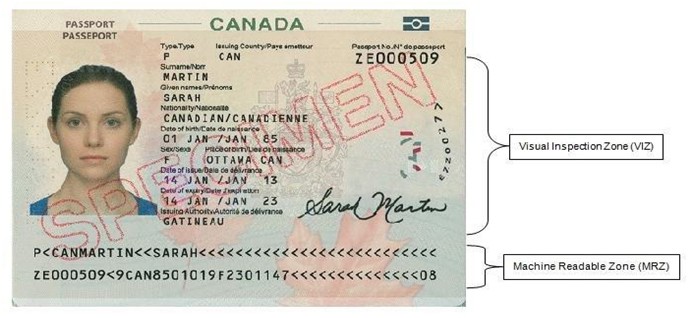
A machine readable chip (MRC) is an electronic feature that enhances a document’s security features. When a passport contains a MRC, there will be a small image of a camera displayed on its cover, as indicated in the example below:
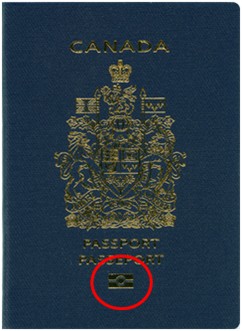
To understand the various name structures and how to record them in IRCC’s system of record, please see Identity management: Name structures and how to record them . This page provides guidance on various naming conventions that are found on foreign travel documents, including but not limited to
- single name fields
- transliterations
- patronymics and matronymics
- names with titles or prefixes
- names where relationships are indicated
Page details

IMAGES
VIDEO
COMMENTS
Canadian Travel Number (CTN) The Canadian Travel Number application relies on a network of systems. A high volume in any system may interrupt your application process. Your data is safe and has been stored for you to resume the process from where you left off. There are many reasons why you could face delays or issues when travelling by plane.
The CTN is a one-of-a-kind number provided by the Passenger Protect Program (PPP) to passengers booking flights to, from, and/or within Canada. The CTN is utilized during the SATA list security screening procedure before boarding a plane. It is used as an extra piece of information to guarantee that travelers are not mistakenly detected and ...
Make sure to have your travel identification and ticket numbers ready. Apply for a Canadian Travel Number. Applying for a CTN is free and voluntary. A CTN is not mandatory for travel, and is used only as an additional piece of information to help prevent SATA-related delays when traveling by air to, from and/or within Canada.
Record Number: PS NCSB 05. In addition, it also includes records related to Centralized Screening and the Canadian Travel Number (CTN) Office. Centralized Screening requires air carriers to provide the Minister of Public Safety and Emergency Preparedness with prescribed data on each person who is on board or expected to be on board an aircraft ...
Find helpful information on health and safety, travel documents, baggage, airport security, country advice and more. Information on a recommended consent letter for Canadian children travelling abroad. You need a valid Canadian passport to board a flight to Canada. Government of Canada's official one-stop-shop for comprehensive international ...
Domestic air travel ; International air travel; Canadian travel number; Bring the right identification to the airport to help with a quick identity verification and check-in process. Remember that the name on your identification must match the name on your airline ticket and boarding pass. Domestic air travel If you have Canadian identification
The Canadian Travel Number is delivering on a longstanding commitment to improve air security to the families impacted by the issue. This program was made possible through extensive consultation, the adoption of the National Security Act (the former Bill C-59) in 2019, as well as updates to the Secure Air Travel Act and Regulations. ...
The Canadian Travel Number is delivering on a longstanding commitment to improve air security to the families impacted by the issue. This program was made possible through extensive consultation, the adoption of the National Security Act (the former Bill C-59) in 2019, as well as updates to the Secure Air Travel Act and Regulations .
0:30. Prime Minister Justin Trudeau announces that travellers who have been mistakenly flagged as security threats from the 'no-fly list', will be able to apply for a unique number, so they are ...
Complete resource on dialing to Canada: country code, mobile and geographic area codes, phone number format and other helpful information. ... Phone Number - 7 digits; United States ... Plan (calling it works like a US long distance call)...however, international charges may apply when calling Canadian numbers! Area codes: Province Main cities ...
A Known Traveler Number (KTN), also commonly referred to as a Trusted Traveler Number, is a special number designated to travelers by the United States Transportation Security Administration (TSA), Department of Homeland Security (DHS), or Department of Defense (DoD). This number qualifies that you had gone through a preflight history test or ...
Canadian passport. Provide the Passport No. / No de passport. You can find this number on your passport information page, on the top right corner, or on the bottom left corner. It has 8 characters and includes letters and numbers in this order: begins with 2 letters, and. ends in 6 numbers.
ID Copy Requirements. Copies must: Be "acceptable" for air travel to, from and/or within Canada. Be valid for at least six (6) months after the application submission date. Be a legible colour copy of the front and back of your ID. For passports, provide copies of the biometric, signature and the middle binding pages. (see examples below)
As of Jan. 20, more than 1,200 Canadian Travel Number applications had been received and 859 issued, Public Safety said. The majority of people who asked for a number were between the ages of 31 ...
Canada Local Phone Number is a type of phone number available in Canada that follows the standard format of ' (+1) Country Code+ (XXX) Area Code + (XXXX) Local Number'. For instance, Brazilian Canadian Coffee Co. is a business in downtown Toronto, Ontario, whose number is +1 (416) 749-2000. 2. Canada Mobile Phone Number.
A Known Traveler Number (KTN) is issued to all individuals approved to receive TSA PreCheck® expedited screening. The KTN must be added in the KTN field when booking airline travel reservations to have the TSA PreCheck® indicator appear on your boarding pass. For members approved for the TSA PreCheck® Application Program, this number is 9 or ...
Citizenship File Number/Group Number. You will find this number on all correspondence (except for the initial acknowledgement letter) mailed to you by the Case Processing Centre in Sydney or by the local Immigration, Refugees and Citizenship Canada office processing your application. This number is all digits. (Example: 0000000).
Collection of Canadian Travel Number (1.2) If a Canadian Travel Number is provided in accordance with subsection (1.1), ... The PPP is an example of one such tool. Passenger Protect Program. The PPP was implemented in 2007 to prevent individuals who may pose a threat to air security, or travel by air to commit an act of terrorism from boarding ...
The MRZ is the main area that should be relied upon to establish the client's primary name. The format of the MRZ on a travel document for names is as follows: The family name is recorded first. The double chevron character (<<) separates the family name (s) from the given name (s) The single chevron (<) separates multiple family names and ...
A Canadian Travel Number prevents delays at the airport for travelers who have the same, or similar, name as someone on the Secure Air Travel Act (SATA) list. Counter-terrorism News Releases. Ministers of Justice and Public Safety urge unity and respect in the face of calls for protests from a terrorist organization
Step 1: Type your country's international access or country exit code. For example, 011, when you're making international calls from the US. Step 2: Now, type Canada's country code (1). Step 3: Next, enter a relevant area code based on the recipient's Canadian area. Step 4: It's time to carefully dial the recipient's complete Canada ...
Tracking the Status of Your Canadian Travel Number (CTN) You can login to your CTN account and check the status of your application at any time. Once your applications has been processed, you will receive an email with your CTN. You will see the following statuses: Submitted. Your application has been received. Under Review.
passport issued by the country of which the passenger is a citizen or a national. NEXUS card. permanent resident card issued by the United States. enhanced driver's license issued in the United States. any document referred to in subsection 50 (1) or 52 (1) of the Immigration and Refugee Protection Regulations.